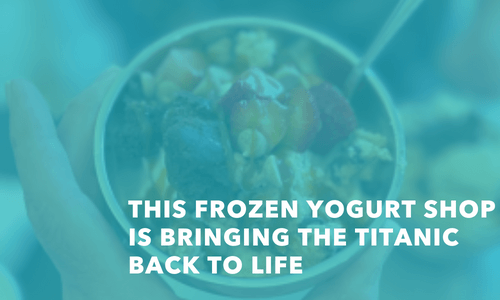To Spoon or Not to Spoon: the History of the World's Favorite Utensil
Soup, cereal, applesauce, yogurt, and ice cream -- without spoons we wouldn't be able to enjoy these awesome foods. It is hard to imagine eating a meal or dessert without a spoon handy, but for a while, the spoon wasn't the great utensil we know it to be now. Spoons have quite the colorful history.
Ancient Egypt
While no one knows exactly when spoons were invented, there have been traces of them that go all the way back to 1000 B.C. The Ancient Egyptians made their ice cream spoons out of wood, flint, and ivory, and were primarily used by Egyptian Pharaohs and members of the clergy. They were quite ornate and were carved as a way to tell religious tales.
Medieval Europe
The Renaissance brought spoons made from cow horns and pewter, and during this time were used to feed both humans and animals. Like the Ancient Egyptians, spoons were a marker of wealth and the first time a spoon was recorded in Europe was by King Edward I of England in 1259. Surprisingly enough, spoons were used as a coronation ritual; after every monarch took the throne they were anointed using a special spoon.
Victorian Era
As Europe was getting richer, spoons were becoming more ornate and changing from simple bowls on sticks to a more streamlined piece. The spoon shape we have come to know and love today wasn't developed until the end of the 18th century.
Modern Day
Nowadays, there are plenty of different uses for spoons as they come in a wide array of shapes and sizes. They include:
-
Ice cream spoons: from gelato spoons to wooden spoons, the utensil you use to eat your favorite frozen treat can really make or break your dessert experience. After all, who wants a cold silver spoon when they really could use a color-changing plastic one? Considering that 90% percent of U.S. households regularly indulge in a frozen treat, spoons can really change the entire experience!
-
Caviar spoons: silver changes the taste of this delicacy, so these spoons are typically made from gold, wood, or mother of pearl.
-
Fruit spoon: these utensils have jagged edges so they can make it easy to carve out little chunks of fruit.
-
Iced tea spoon: made with long stems, easier for stirring in sugar and sweetener!
In the market for some ice cream spoons to accompany your dessert? Look no further than our selection, as we have spoons for every ice cream occasion you can think of!





